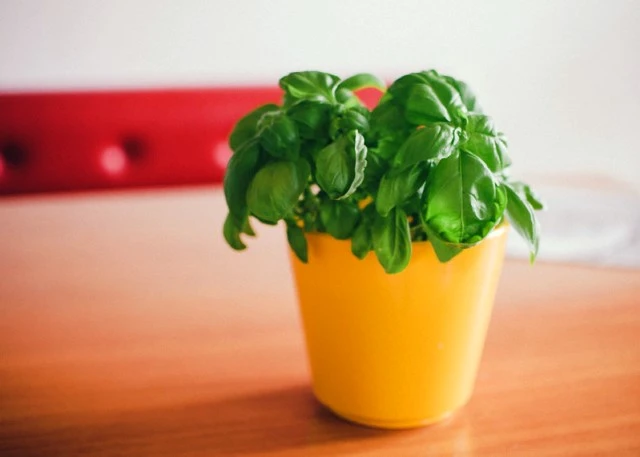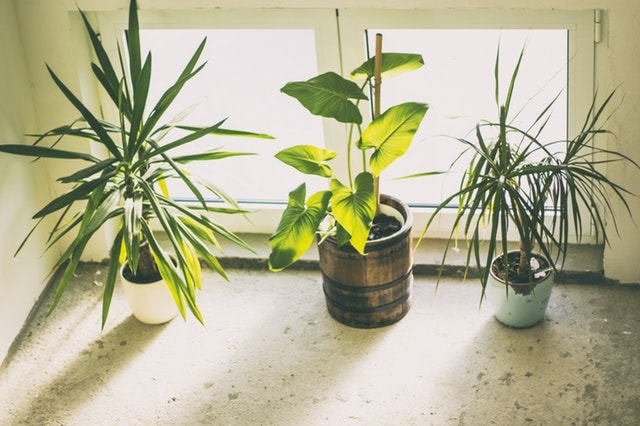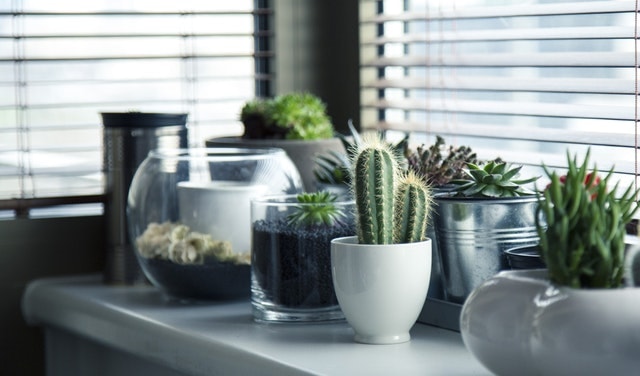Basil, with its vibrant green leaves and distinct aroma, is a staple herb in many kitchens. Growing basil indoors not only adds flavor to your dishes but also brings a touch of freshness to your home. However, caring for an indoor basil plant requires some attention and know-how to ensure it thrives. In this guide, we’ll explore the essential steps to keep your basil plant healthy and vibrant inside your home.

Choosing the Right Location:
Before bringing your basil plant indoors, it’s crucial to select the right spot. Basil loves sunlight, so choose a location that receives at least six to eight hours of sunlight daily. A sunny windowsill or a well-lit area near a window is ideal for your basil plant.
Providing Adequate Water:
Like most herbs, basil prefers moist soil but not waterlogged. Water your basil plant when the top inch of soil feels dry to the touch. Ensure proper drainage by using a pot with drainage holes to prevent water from pooling at the roots, which can lead to root rot.
Maintaining Proper Temperature and Humidity:
Basil thrives in warm temperatures, ideally between 65°F to 85°F (18°C to 29°C). Avoid placing your basil plant near drafts or cold windows during the winter months, as cold temperatures can damage the plant. Additionally, basil prefers moderate humidity, so consider using a humidity tray or misting the leaves occasionally, especially in dry indoor environments.
Pruning and Harvesting:
Regular pruning is essential for encouraging bushy growth and preventing your basil plant from becoming leggy. Pinch off the top leaves of the plant regularly, which will stimulate new growth and prevent the plant from flowering too soon. When harvesting basil leaves for culinary use, snip them from the top of the plant, just above a pair of leaves, using sharp scissors or pruning shears.
Fertilizing:
To keep your indoor basil plant healthy and thriving, feed it with a balanced fertilizer every four to six weeks during the growing season (spring and summer). Follow the instructions on the fertilizer package carefully, as over-fertilizing can lead to salt buildup in the soil, which can harm the plant.
MORE POSTS: Lemongrass Care: 101
FAQs related to Indoor Basil Care:
Yellowing leaves on a basil plant can indicate various issues, including overwatering, underwatering, nutrient deficiencies, or pests. Check the soil moisture levels, adjust watering accordingly, and inspect the plant for signs of pests or diseases.
Regular pruning is the best way to prevent basil plants from flowering too early. Pinch off the top leaves regularly to encourage bushy growth and delay flowering. If flowers do appear, promptly remove them to redirect the plant’s energy into leaf production.
Yes, basil is relatively easy to propagate from cuttings. Simply snip a 4- to 6-inch stem from the parent plant, remove the lower leaves, and place the cutting in a glass of water. Change the water every few days and wait for roots to develop before transplanting the cutting into the soil.
In conclusion, growing basil indoors can be a rewarding experience for any home gardener. By providing adequate sunlight, water, and care, you can enjoy a continuous supply of fresh basil leaves for culinary delights right from your kitchen. Remember to address any issues promptly and enjoy the beauty and flavor that indoor basil brings to your home.



